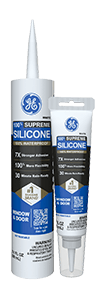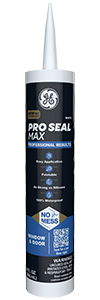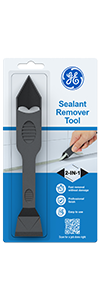While acrylic caulks are a simple, economical choice for sealing various interior gaps in construction materials, they fail to hold up in the harsher extremes of exterior projects. Constant sun, rain, and seasonal movement demand a sealant that stays flexible and resists breakdown year after year. For professionals, silicone is the superior choice outdoors because it provides superior durability, weather resistance, and long-term performance.
Once cured, silicone sealant remains permanently flexible, allowing it to accommodate joint movement of up to 50% without cracking or losing adhesion. This flexibility makes the difference in exterior applications where materials often expand and contract daily, rather than just seasonally, with temperature swings.
Caulk vs sealant: problems with using acrylic caulks outdoors
Acrylic caulk is inexpensive and relatively easy to apply. However, it lacks the performance needed for outdoor use. Its cured consistency is more rigid than silicone, which means it cannot expand and contract as effectively when joints shift with seasonal temperature changes. As a result, acrylic caulk is prone to cracking and separating from surfaces within a short time.
Outdoors, it is also vulnerable to UV damage, which causes it to degrade and lose adhesion under prolonged sun exposure. Additionally, moisture presents another kind of weakness. Rain and snow can seep into cracked acrylic beads, leading to rot and mold growth. Even when freshly applied, acrylic caulk often has a shorter service life compared to silicone. While acrylic may be acceptable for light-duty indoor projects, it simply doesn’t withstand the stresses of weather and movement in exterior applications.
Why silicone sealant is the go-to in exterior applications
Once cured, silicone remains permanently flexible, allowing it to accommodate joint movement of up to 50% without cracking or losing adhesion. This flexibility makes the difference in exterior applications where materials often expand and contract daily, rather than just seasonally, with temperature swings.
Silicone is also highly resistant to UV radiation. It doesn’t chalk, shrink, or deteriorate under prolonged sun exposure. In wet conditions, it forms a waterproof barrier that prevents leaks and mold growth. Because it bonds strongly to non-porous substrates like glass, aluminum, and vinyl, silicone especially excels in sealing around windows, doors, and siding joints. As an added selling point, many professional-grade silicone sealants are rain-ready in as little as 30 minutes.
Comparing silicone and acrylic caulk
For outdoor uses, silicone and acrylic caulk perform differently in four important categories.
1. Flexibility
Silicone remains elastic throughout its service life, accommodating up to 50% joint movement. Acrylic, on the other hand, is far more rigid, so even modest expansion or contraction can cause cracking or separation.
2. Durability
Silicone is resistant to UV rays, rain, and snow, which allows it to maintain adhesion and appearance even under long-term sun exposure. Acrylic degrades more quickly outdoors, often shrinking or peeling within a few seasons.
3. Adhesion
Silicone bonds strongly to non-porous materials like glass, vinyl, and aluminum. Acrylic works reasonably well on porous surfaces such as wood or drywall, but does not bond as strongly on slicker exterior substrates.
4. Paintability
Here is one area where acrylic has an arguable advantage. Silicone generally cannot be painted, which can limit finishing options to colors available from the manufacturer. However, hybrid sealants like GE’s Pro Seal Max series bridge this gap by combining silicone’s strongest performance characteristics with paintability.
Silicone sealant for outdoor use: GE Supreme Silicone Window & Door Sealant
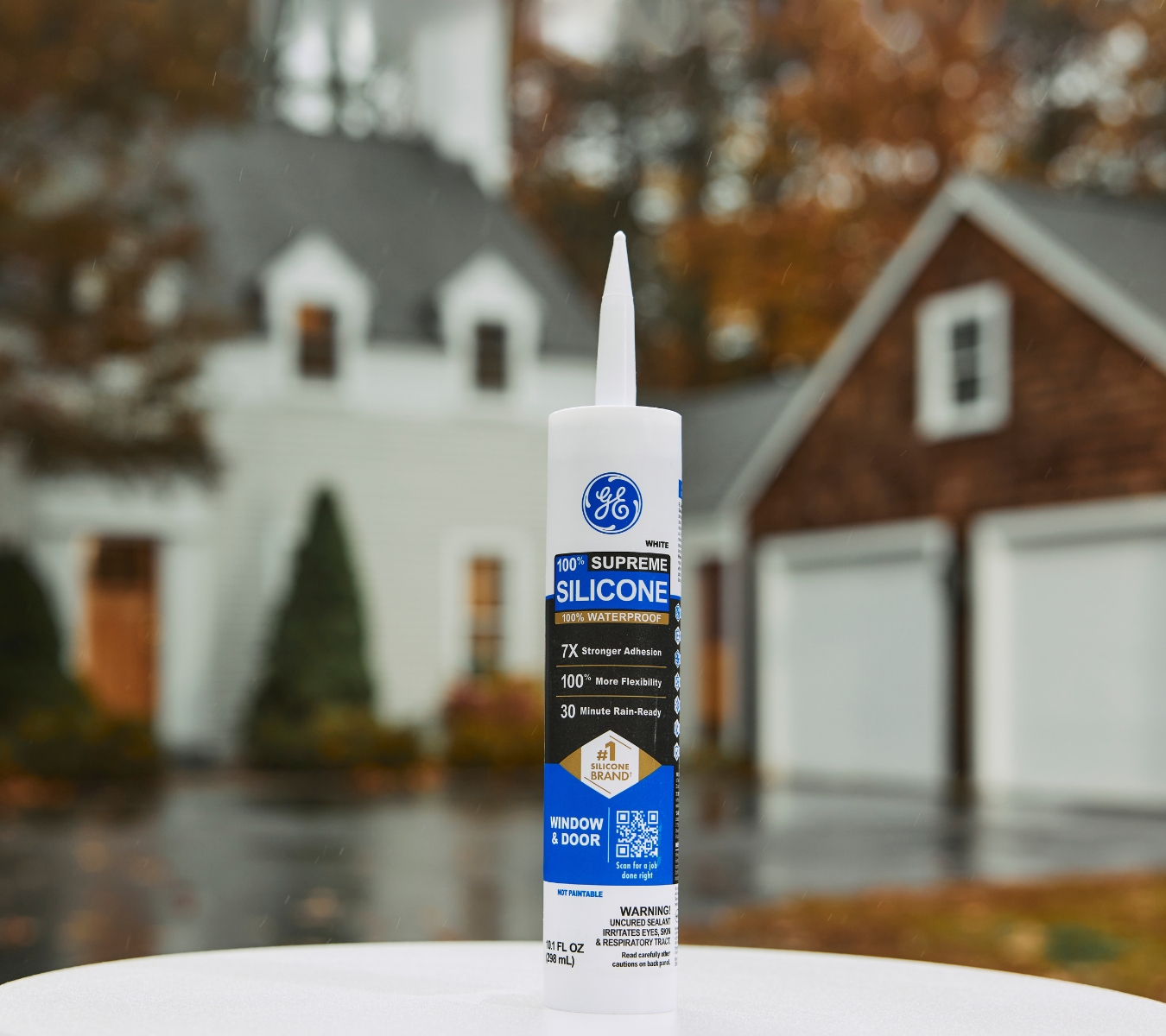
For professionals tackling demanding exterior projects, GE Supreme Silicone Window & Door Sealant sets the standard for performance. This 100% silicone sealant is rated ASTM C920, Class 50, meaning it can handle up to 50% joint movement without cracking or losing adhesion. That flexibility is essential for windows, doors, and siding joints that expand and contract throughout the year.
Once cured, it forms a permanently waterproof barrier resistant to rain, snow, and standing moisture. Beyond offering strong resistance to UV rays, mold, and mildew, its bead maintains integrity and appearance even under harsh sun exposure. Contractors will also appreciate its fast rain-ready time (just 30 minutes) and it comes in six shades to aid in color matching.
When to use a hybrid sealant
While silicone is the top performer for exterior exposure, there are use cases where hybrid sealants incorporating acrylic-latex components into a silicone base make more sense. Hybrids combine many of silicone’s weather-resistant qualities with added advantages that contractors appreciate on the job. For example, GE Pro Seal Max Window & Door Sealant provides superior adhesion across a wide range of substrates like wood, masonry, metals, and composites.
It also cures to a tougher surface, which makes it more resistant to abrasion and scuffing in high-contact areas like trim and entryways. Unlike pure silicone, hybrids are paintable once cured, giving you flexibility in matching finish colors. Pro Seal Max also resists shrinking, so beads maintain their shape and protection longer.
Best practices for exterior sealing
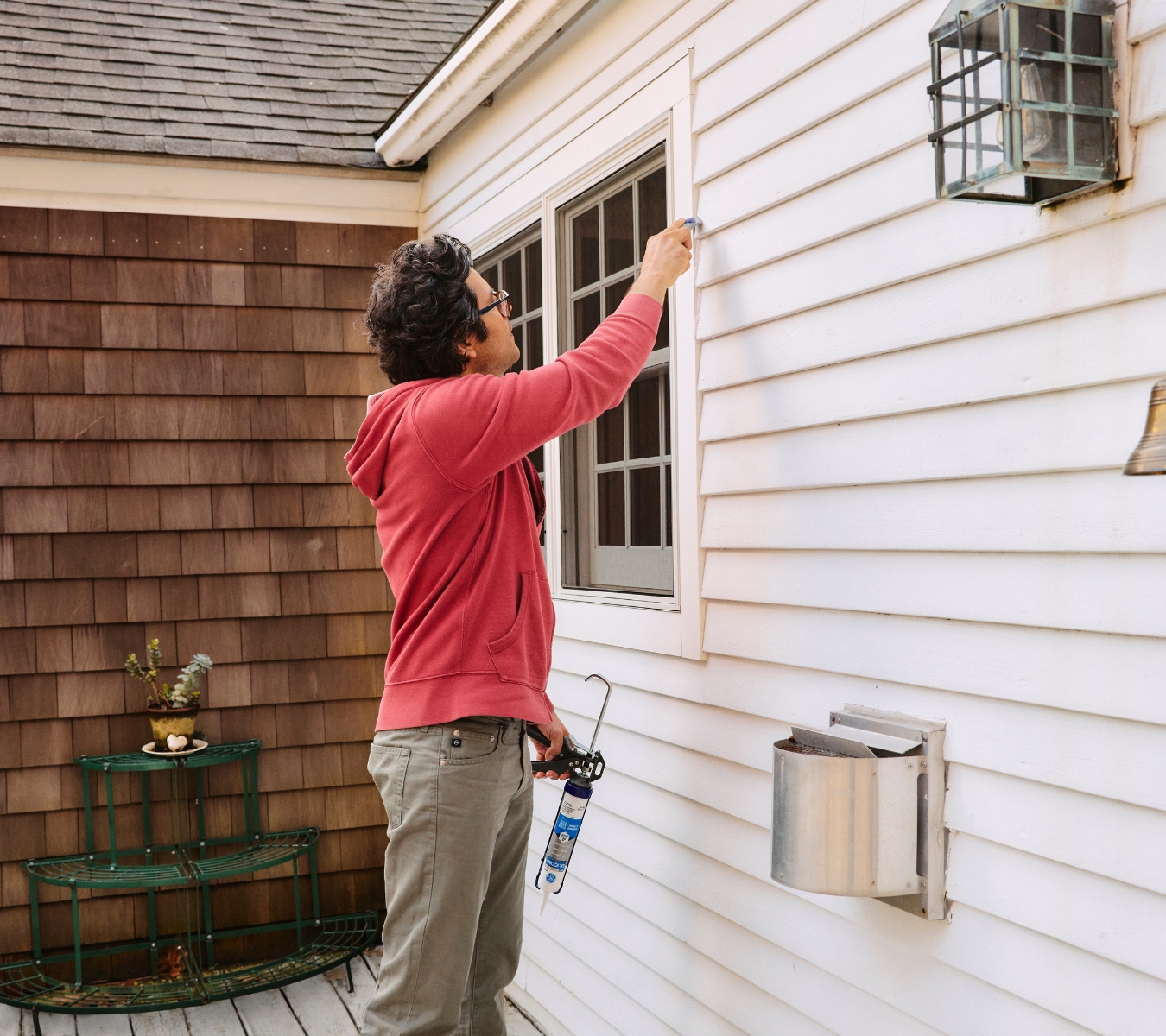
Exterior projects demand careful preparation and application to ensure long-term performance. Start by removing any old, cracked, or peeling caulk with either a putty knife or GE’s Sealant Remover Tool, which helps create a clean surface without damaging surrounding materials.
Once the area is cleared, wipe away dust, dirt, or moisture so the new sealant bonds properly. Apply sealant when the temperature is within the manufacturer’s recommended range and avoid damp weather to prevent premature washout. Apply a steady, continuous bead to ensure full coverage of the joint. For a professional finish, smooth the bead immediately with GE’s Sealant Smoothing Tool to help press the sealant into the gap. Always follow curing guidelines before exposing the joint to rain, paint, or regular use.
To get GE Sealants’ products for use on the jobsite, visit these fine retailers in the U.S. or Canada.

